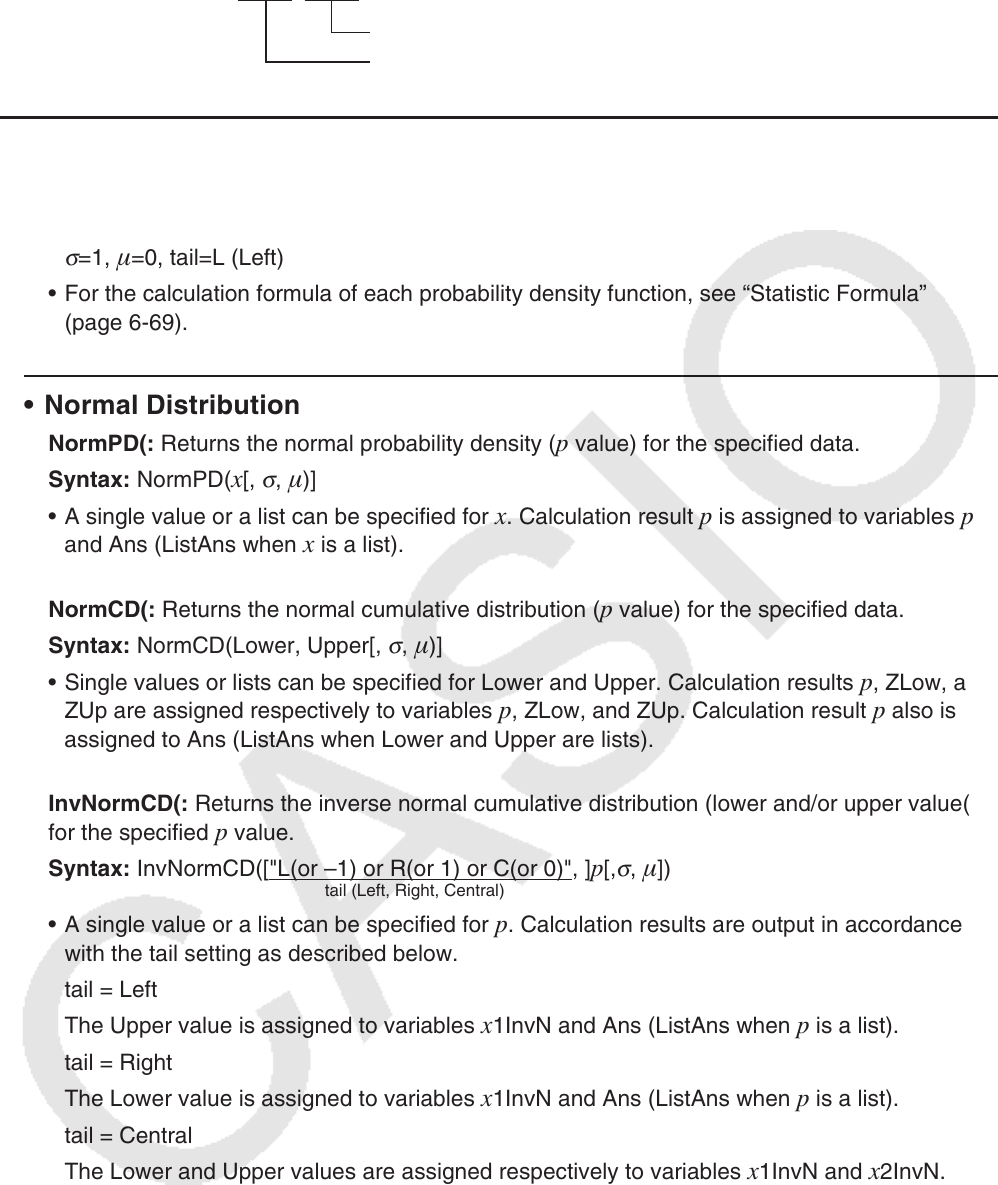User Manual
Table Of Contents
- Contents
- Getting Acquainted — Read This First!
- Chapter 1 Basic Operation
- Chapter 2 Manual Calculations
- 1. Basic Calculations
- 2. Special Functions
- 3. Specifying the Angle Unit and Display Format
- 4. Function Calculations
- 5. Numerical Calculations
- 6. Complex Number Calculations
- 7. Binary, Octal, Decimal, and Hexadecimal Calculations with Integers
- 8. Matrix Calculations
- 9. Vector Calculations
- 10. Metric Conversion Calculations
- Chapter 3 List Function
- Chapter 4 Equation Calculations
- Chapter 5 Graphing
- 1. Sample Graphs
- 2. Controlling What Appears on a Graph Screen
- 3. Drawing a Graph
- 4. Saving and Recalling Graph Screen Contents
- 5. Drawing Two Graphs on the Same Screen
- 6. Manual Graphing
- 7. Using Tables
- 8. Modifying a Graph
- 9. Dynamic Graphing
- 10. Graphing a Recursion Formula
- 11. Graphing a Conic Section
- 12. Drawing Dots, Lines, and Text on the Graph Screen (Sketch)
- 13. Function Analysis
- Chapter 6 Statistical Graphs and Calculations
- 1. Before Performing Statistical Calculations
- 2. Calculating and Graphing Single-Variable Statistical Data
- 3. Calculating and Graphing Paired-Variable Statistical Data (Curve Fitting)
- 4. Performing Statistical Calculations
- 5. Tests
- 6. Confidence Interval
- 7. Distribution
- 8. Input and Output Terms of Tests, Confidence Interval, and Distribution
- 9. Statistic Formula
- Chapter 7 Financial Calculation
- Chapter 8 Programming
- Chapter 9 Spreadsheet
- Chapter 10 eActivity
- Chapter 11 Memory Manager
- Chapter 12 System Manager
- Chapter 13 Data Communication
- Chapter 14 Geometry
- Chapter 15 Picture Plot
- Chapter 16 3D Graph Function
- Appendix
- Examination Mode
- E-CON4 Application (English)
- 1. E-CON4 Mode Overview
- 2. Sampling Screen
- 3. Auto Sensor Detection (CLAB Only)
- 4. Selecting a Sensor
- 5. Configuring the Sampling Setup
- 6. Performing Auto Sensor Calibration and Zero Adjustment
- 7. Using a Custom Probe
- 8. Using Setup Memory
- 9. Starting a Sampling Operation
- 10. Using Sample Data Memory
- 11. Using the Graph Analysis Tools to Graph Data
- 12. Graph Analysis Tool Graph Screen Operations
- 13. Calling E-CON4 Functions from an eActivity

8-42
• Logistic regression statistical calculation
LogisticReg List 1 , List 2
y -axis data (YList)
x -axis data (XList)
k Performing Distribution Calculations in a Program
• The following values are substituted whenever any of the arguments enclosed in brackets
([ ]) are omitted.
σ
=1, =0, tail=L (Left)
• For the calculation formula of each probability density function, see “Statistic Formula”
(page 6-69).
• Normal Distribution
NormPD(: Returns the normal probability density ( p value) for the specified data.
Syntax: NormPD(
x [,
σ
, )]
• A single value or a list can be specified for
x . Calculation result p is assigned to variables p
and Ans (ListAns when x is a list).
NormCD(: Returns the normal cumulative distribution (
p value) for the specified data.
Syntax: NormCD(Lower, Upper[,
σ
, )]
• Single values or lists can be specified for Lower and Upper. Calculation results
p , ZLow, and
ZUp are assigned respectively to variables p , ZLow, and ZUp. Calculation result p also is
assigned to Ans (ListAns when Lower and Upper are lists).
InvNormCD(: Returns the inverse normal cumulative distribution (lower and/or upper value(s))
for the specified
p value.
Syntax: InvNormCD([ "L(or –1) or R(or 1) or C(or 0)" , ]
p [,
σ
, ])
tail (Left, Right, Central)
• A single value or a list can be specified for p . Calculation results are output in accordance
with the tail setting as described below.
tail = Left
The Upper value is assigned to variables
x 1InvN and Ans (ListAns when p is a list).
tail = Right
The Lower value is assigned to variables
x 1InvN and Ans (ListAns when p is a list).
tail = Central
The Lower and Upper values are assigned respectively to variables
x 1InvN and x 2InvN.
Lower only is assigned to Ans (ListAns when p is a list).










